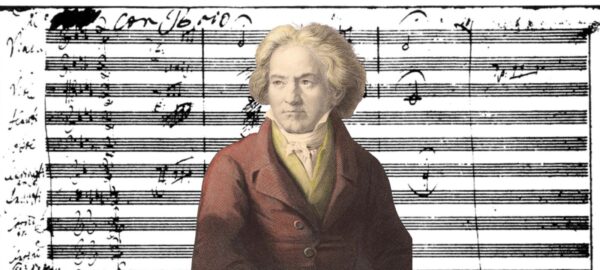
We're performing these three Beethoven pieces in 2026
December 10, 2025
Beethoven's legendary composing takes center stage in the Omaha Symphony's 2025/26 Season!Thursday, July 23
Principal Pops Conductor Ernest Richardson and violinist Anne Nagosky give us a live Zoom update.
Earlier this spring, Principal Pops Conductor Ernest Richardson and violinist Anne Nagosky joined a group of Omaha Symphony supporters via Zoom for a live digital happy hour to catch up on what’s keeping them busy, share some music, and dive into a little “nerdy talk.”
Though some time has passed, the sentiments Ernest and Anne shared are the same – we miss our community and can’t wait until we can share live music with you! Until then, we’ll continue to connect through music, bringing it to you wherever you are.
“Gigue” from Partita No. 3 in E Major for solo violin, BWV 1006.1 by J.S. Bach
Performed by Omaha Symphony Violinist Anne Nagosky
Though online performances aren’t the same as live ones, we’ve noticed many silver linings of our digital initiative, Symphony | Anywhere – one in particular is the opportunity for audiences to get to know the musicians of the Omaha Symphony as solo artists. Many musicians have a rich performing life that includes not just orchestral and chamber music, but also solo playing. For many, hearing these instruments removed from the context of the full symphony orchestra and even without piano accompaniment is a rare treat that lends a new appreciation to the musical art form.
J.S. Bach’s sonatas and partitas for solo violin, the collection of work from which Anne performed, are mainstays in the solo violin repertoire. Written in 1720 but not published until 1802, they became essential to every violinist’s studies after the violinist Joseph Joachim began performing them.
Composed of three sonatas and three partitas, each set is united by a common key. The partitas contain four to seven movements, each based upon a popular baroque dance Bach would have known well. Here are some common movements found in baroque dance suites:
Allemande: refers to a German dance, a moderately slow and serious dance in quadruple meter.
Bourrée: a dance of French origin, typically a lively dance in duple meter.
Courante: a courtly dance typically written in triple meter. Dance steps were sometimes derived from fencing exhibitions.
Gavotte: an elegant dance in duple meter.
Gigue: a lively dance in duple meter, from the Irish “jig” – dance steps include bouncing.
Minuet: a graceful dance in triple meter, this dance typically included bowing and toe-pointing.
Sarabande: triple-meter Spanish dance, often slow and stately.
Love the Omaha Symphony?
Be the first to learn about new concerts, stories, and special offers.